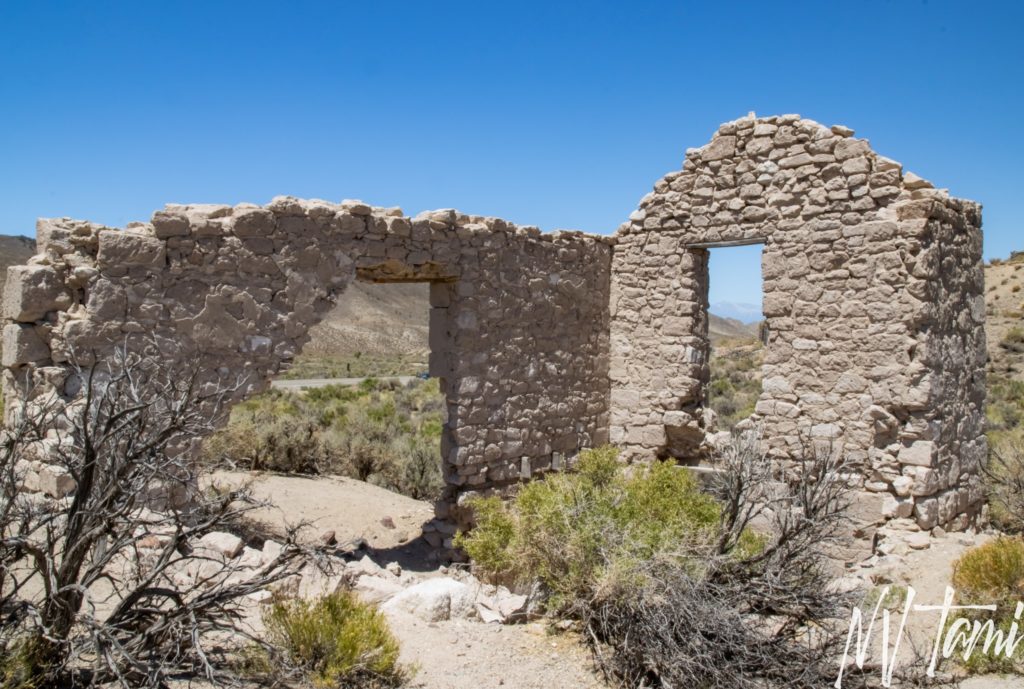
In 1866 prospectors T.W. McNutt, H.W. Bunyard and Thomas Israel discovered silver ore deposits at the south end of the Silver Peak Range, east of the Sylvania Mountains. They named their discovery Palmetto, in honor of their home state, South Carolina. Some say they believed the local Joshua Trees were related to the palmetto. A mining camp, Palmetto Wash, quickly developed and the name was shortened to Palmetto.
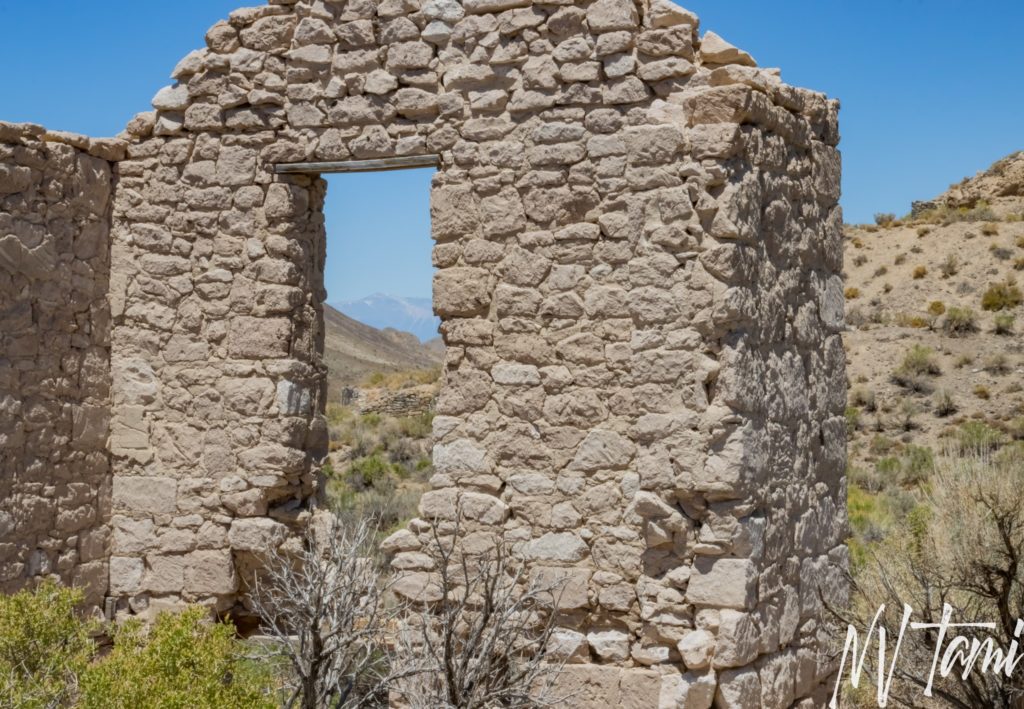
A twelve-stamp mill was erected and in production by the end of the 1866. In 1868 New York and Silver Peak Mining Company under direction of Colonel Catherwood relocated their twelve-stamp mill from Silver Peak to Palmetto. By November 7, the mill was ready for production and Catherwood had fifty to sixty employees. On January 16, 1869 Catherwood Mill shipped three bullion bars valued at $4,600 to Silver Peak, $89,000 in 2021 monetary value. Ore veins were shallow and soon the stamp mills were quiet and Catherwood returned to the east coast.
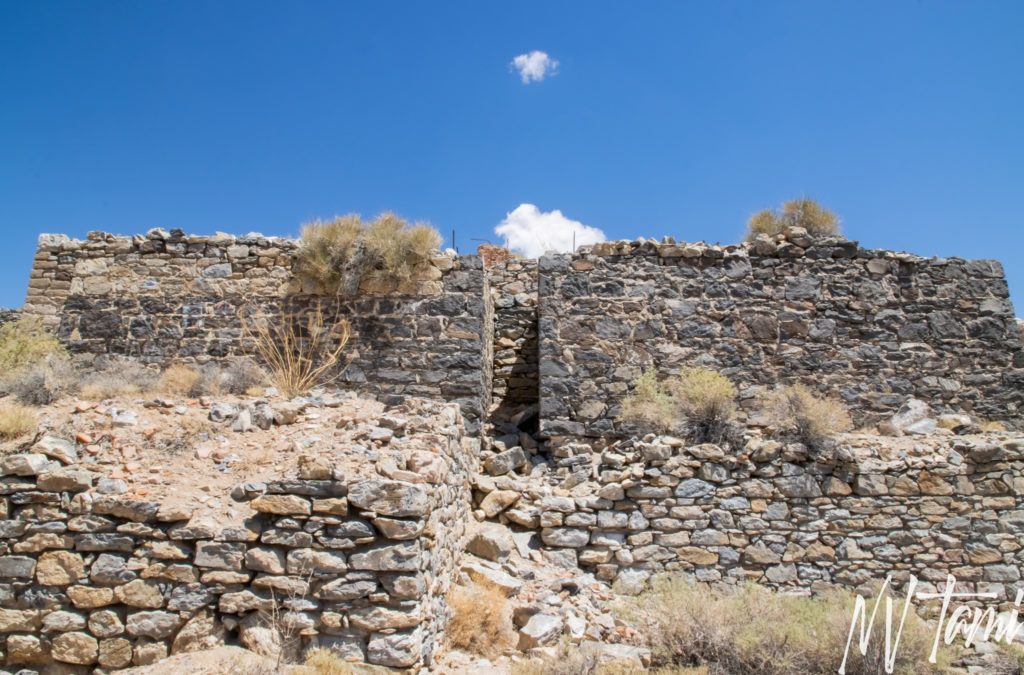
A revival occurred in 1880s when the McNamara Mine Mine was established, this time the mines were more productive and a town developed. Palmetto was awarded a post office on April 24, 1888. Many of the town structures were stacked rock from local quarries. Unlike the first Palmetto, this town survived for six years, an impressive span compared to many mining towns. The mines once again played out and on June 7, 1894 postal service was transferred to Lida.
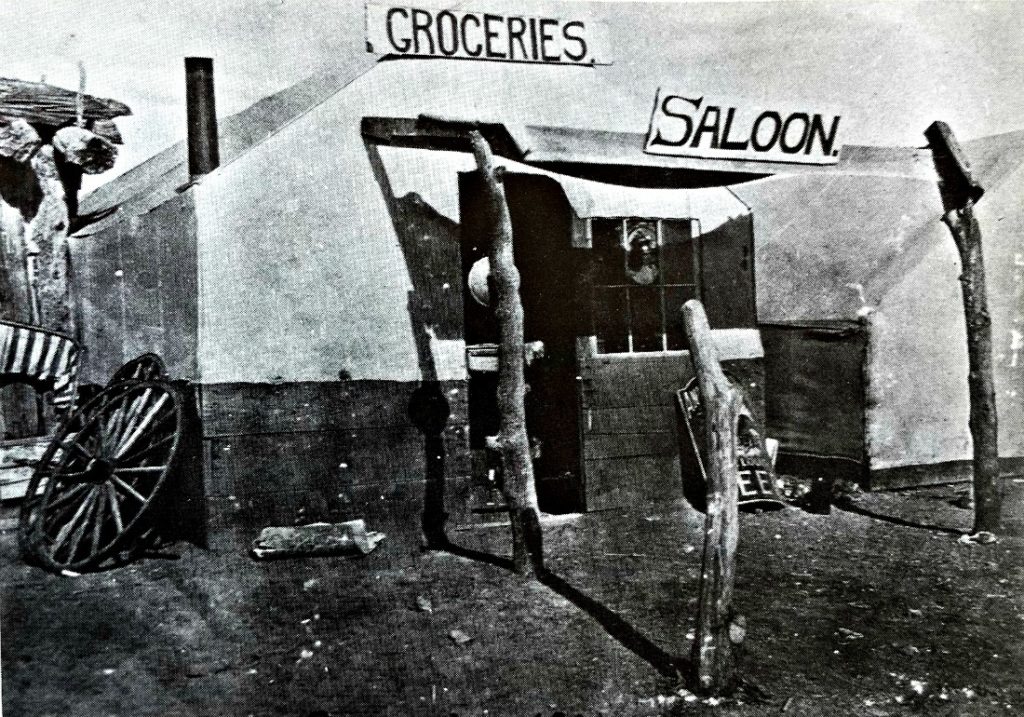
(Photo credit: Wikipedia)
A third revival began in 1903 when J.G. Fesler discovered the Windypah section of Palmetto District after extensive prospecting. New mines were founded and prior mines were re-opened. Palmetto once again began receiving postal service on December 16, 1905. A town site was platted including a mile long commercial street with several buildings moved from Lida. Businesses included stores, boarding houses, restaurants, lumber yards, physician offices and of course saloons. A weekly paper, The Palmetto Herald, was first published February, 1906. The first thirst parlor was owned and operated by Lester Laird and W. H. Green. They had monopoly on adult beverages, at least for ten days, until they had competition for their liquid gold.
Frank Duval, of Lida, and Jas. Foley, are both erecting places where the bibulously inclined may imbibe to their hearts content
Inyo Independent, February 23, 1906
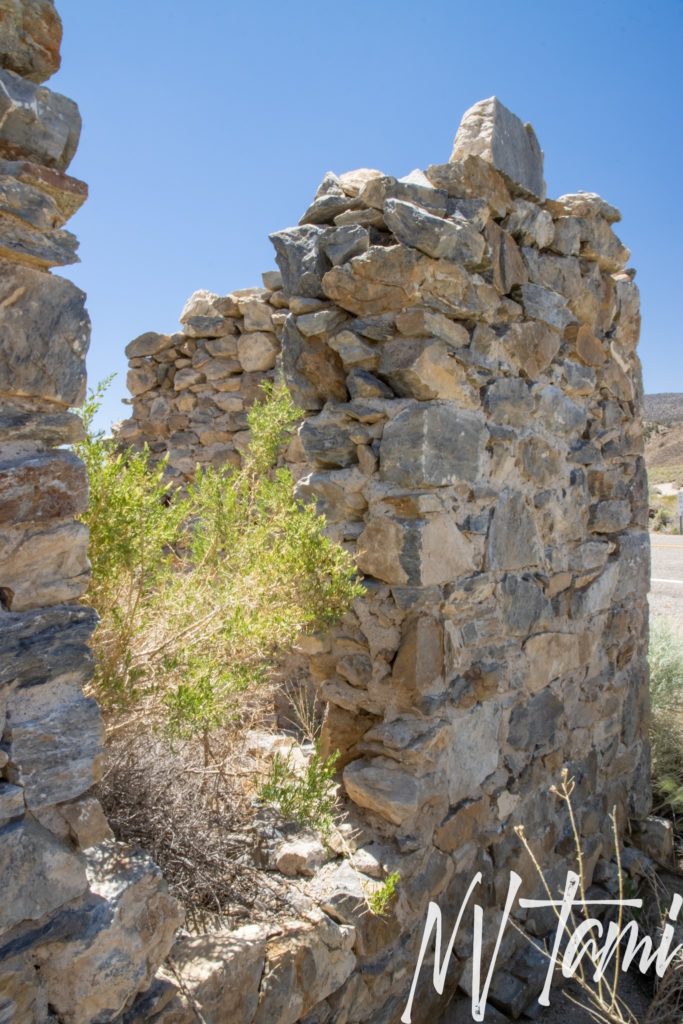
The town grew so rapidly, by 1906 over two hundred tents were set up for miners.
A tent would no sooner be rolled off a wagon than readily hands would have it take to some location already selected, and it would quickly be the domicile of its owner.
Inyo Independent, February 23, 1906
The mines once again played out. By fall of 1906, miners and townfolk were relocating to Silver Peak and Blair. The Palmetto Herald didn’t survive through 1906 and postal service was once again transferred to Lida on December 31, 1907. Small amounts of ore containing silver and gold were shipping in 1908 but the town became a ghost town for the third and final time.

Allied M. & M. Co. built a 50-ton concentration mill 1920 but the town remained empty. Over its existence the Palmetto Mine produced $6.5M silver and gold and the McNamara Mine produced a significant amount of lead-silver ore.
Ruins
Today Palmetto sits on the side of Highway 266. Most remains date from Old Palmetto, the only reminders of New Palmetto are foundations and tin cans. A two story rock store overlooks town. The rock was cut to create ninety-degree corners, a more labor intensive and expensive construction technique.
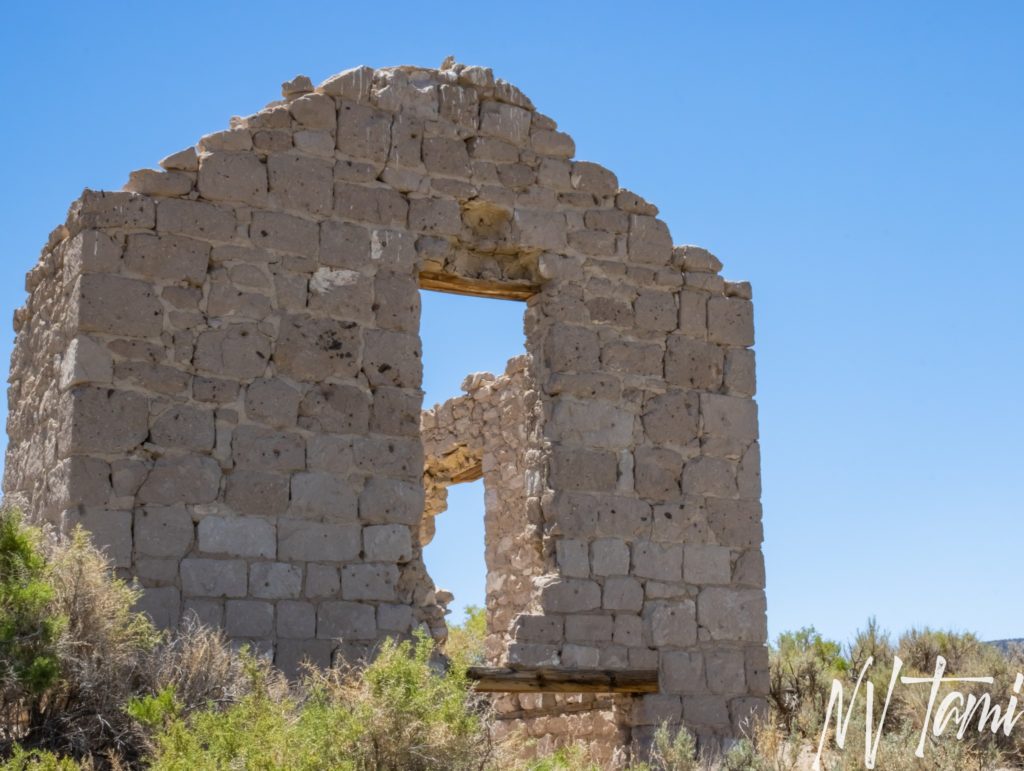
The mill foundations are spread over the hillside.
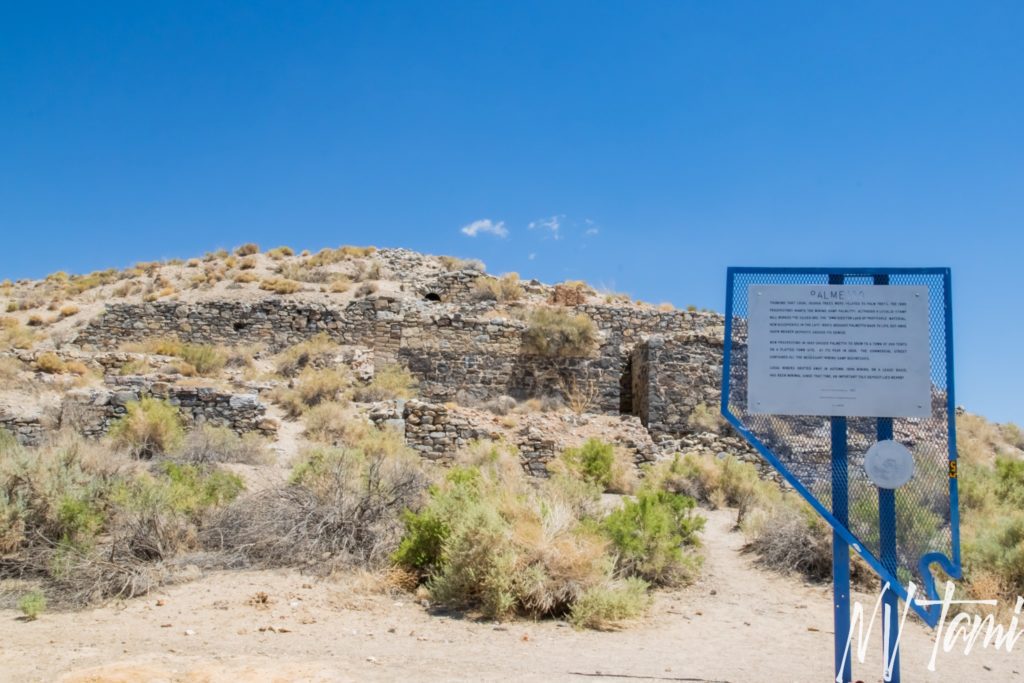
A stacked rock cabin stands along the modern highway below the mill foundations.
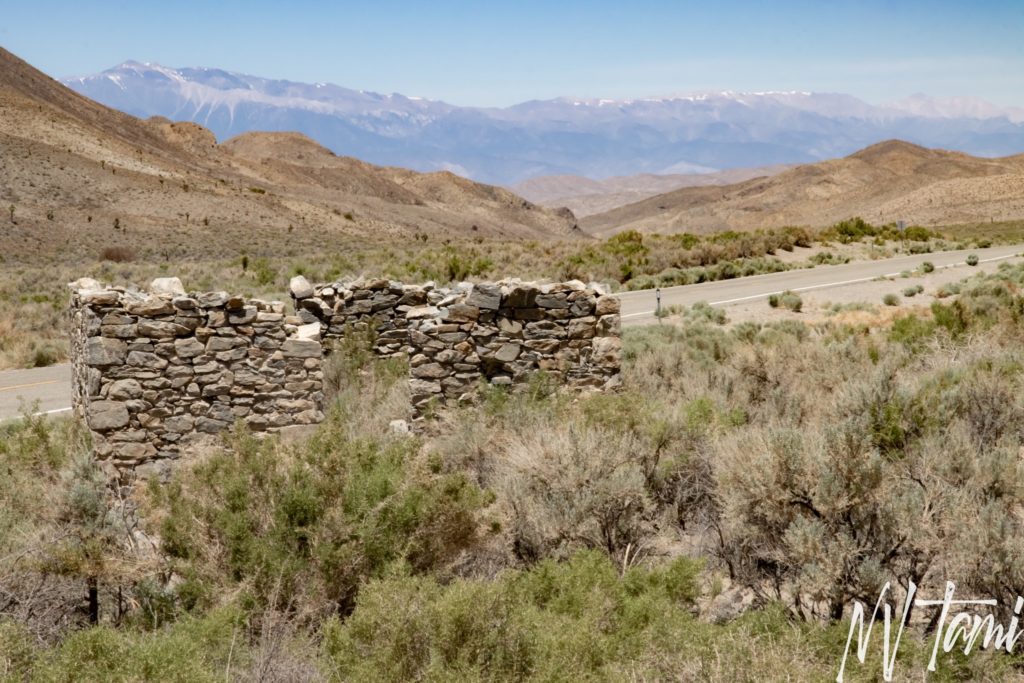
Palmetto was the first day of my Guys Ghost Town Trip. Our guide for the day was the Godfather of Nevada ghost towns himself, Stan Paher. We started our day at Red Rock Mine then visited Fish Lake Valley Heritage Center & Museum where Linda Williams is on a mission to preserve local history. After visiting Palmetto we headed to Sylvania, Pigeon Springs, Medicine Rock and Stewarts Mill.

Visited 6-5-2021
References
- Basso, Dave. Nevada Historical Marker Guidebook. Nevada Publications, 1986. Marker 158.
- Carlson, Helen S. Nevada Place Names: A Geographical Dictionary. University of Nevada Press, 1974. Page 186.
- Destination 4×4: Palmetto, Nevada
- Diggings: Palmetto Mining District
- Encyclopedia or Forlorn Places: Palmetto, Nevada
- Gamett, James and Stan Paher. Nevada Post Offices: An Illustrated History. Nevada Publications, 1863. Page 103.
- Nevada Expeditions: Palmetto
- Ghosttowns.com: Palmetto
- Paher, Stanley. Nevada Ghost Towns and Mining Camps. Nevada Publications, 1970. Pages 383, 406, 411-413.
- Paher, Stanley. Nevada Ghost Towns and Desert Atlas. Nevada Publications, 2009. Page 156-157.
- Shamberger, Hugh A. Silver Peak: Early history, development, water supply. Nevada Historical Press, 1976. Pages 12-13, 44.
- USGS: Palmetto (historical)
- Wikipedia: Palmetto, Nevada










Dellilah Sabba says
Excellent photos, thank you for posting!! I first saw Palmetto around 1983 on a college geology field trip to the Gold Point area, and have since stopped and looked around several times since then – but not recently. It’s time to go say hello once more.
Tami says
Thank you and you are welcome. It sounds like you had a great class!
Therese Erreguible Elder says
I had know idea how many ghost towns there were here in Nevada. I love my Nevada and thank you for all of the history you let us know.
Tami says
You are welcome.
I don’t know if anyone has a good county on how many ghost towns are in Nevada. A lot depends on how you define a ghost town. Stan Paher has over 600, his criteria are 25 residents, a retail business, and some form of mail delivery. I asked Shawn Hall, and I believe he said over 1,200. If you count mines, stage stops, and other historic locations, there are many more!